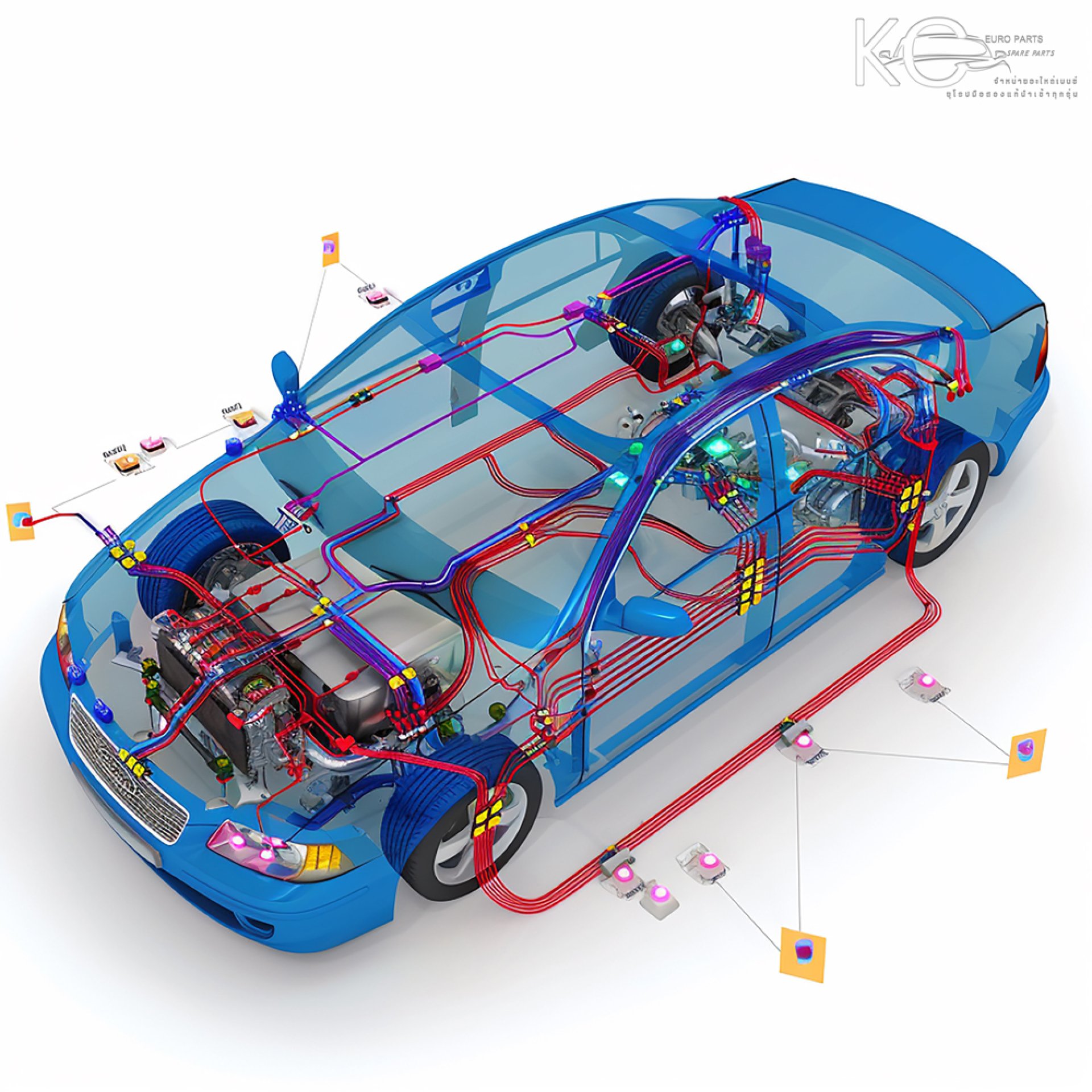ระบบไฟฟ้าและเซ็นเซอร์ (ELECTRICAL & SENSORS)

"ระบบไฟฟ้าและเซ็นเซอร์" ระบบประสาทอัจฉริยะของรถยนต์สมัยใหม่
ในรถยนต์ยุคใหม่ ระบบไฟฟ้าและเซ็นเซอร์ทำหน้าที่เปรียบเสมือนระบบประสาทส่วนกลาง ที่คอยรวบรวมข้อมูลจากส่วนต่างๆ (เซ็นเซอร์) และส่งไปยังสมองกล (กล่องควบคุม) เพื่อสั่งการให้ระบบเครื่องยนต์ เกียร์ และความปลอดภัยทำงานได้อย่างแม่นยำและมีประสิทธิภาพสูงสุด
เซ็นเซอร์ (Sensors) คืออุปกรณ์ตรวจจับที่เปรียบได้กับ "ประสาทสัมผัส" ของรถยนต์ มีหน้าที่วัดค่าต่างๆ แล้วส่งเป็นสัญญาณไฟฟ้ากลับไปที่กล่องควบคุม ตัวอย่างสำคัญเช่น เซ็นเซอร์ออกซิเจน (O2 Sensor) ที่วัดปริมาณออกซิเจนในไอเสียเพื่อปรับส่วนผสมเชื้อเพลิง, เซ็นเซอร์ความเร็วล้อ (Wheel Speed/ABS Sensor) ที่ใช้ในระบบเบรก ABS และระบบควบคุมการทรงตัว
กล่องควบคุม (Control Units / ECU) คือ "สมองกล" ของรถยนต์ หรือที่รู้จักกันในชื่อ ECU (Engine Control Unit) กล่องนี้จะรับข้อมูลจากเซ็นเซอร์ทั้งหมดมาประมวลผล แล้วสั่งการทำงานของหัวฉีด, ระบบจุดระเบิด, และระบบอื่นๆ นับพันครั้งต่อวินาที เพื่อให้ได้สมรรถนะที่ดีที่สุดและปล่อยมลพิษน้อยที่สุด
เมื่อเซ็นเซอร์ตัวใดตัวหนึ่งทำงานผิดพลาด อาจส่งผลกระทบเป็นวงกว้างต่อสมรรถนะของรถ เช่น อัตราเร่งแย่ลง หรือกินน้ำมันมากขึ้น ดังนั้นการวินิจฉัยที่แม่นยำเมื่อมีไฟเตือนแสดงขึ้นจึงเป็นสิ่งสำคัญ
"Electrical & Sensors" The Intelligent Nervous System of the Modern Car
In modern vehicles, the electrical and sensor system functions like a central nervous system. It constantly gathers data from various parts (sensors) and sends it to the brain (control units) to command the engine, transmission, and safety systems to operate with maximum precision and efficiency.
Sensors These are the detection devices, analogous to the car's "senses." They measure various parameters and send them as electrical signals to the control unit. Key examples include the Oxygen (O2) Sensor, which measures oxygen in the exhaust to optimize the fuel mixture, and the Wheel Speed (ABS) Sensor, used for the ABS and stability control systems.
Control Units (ECU) This is the "brain" of the car, commonly known as the ECU (Engine Control Unit). This unit receives data from all sensors, processes it, and then commands the fuel injectors, ignition system, and other functions thousands of times per second to achieve optimal performance and minimal emissions.
A single malfunctioning sensor can have a cascading effect on the vehicle's performance, leading to poor acceleration or increased fuel consumption. Therefore, accurate diagnostics are crucial whenever a warning light appears.
